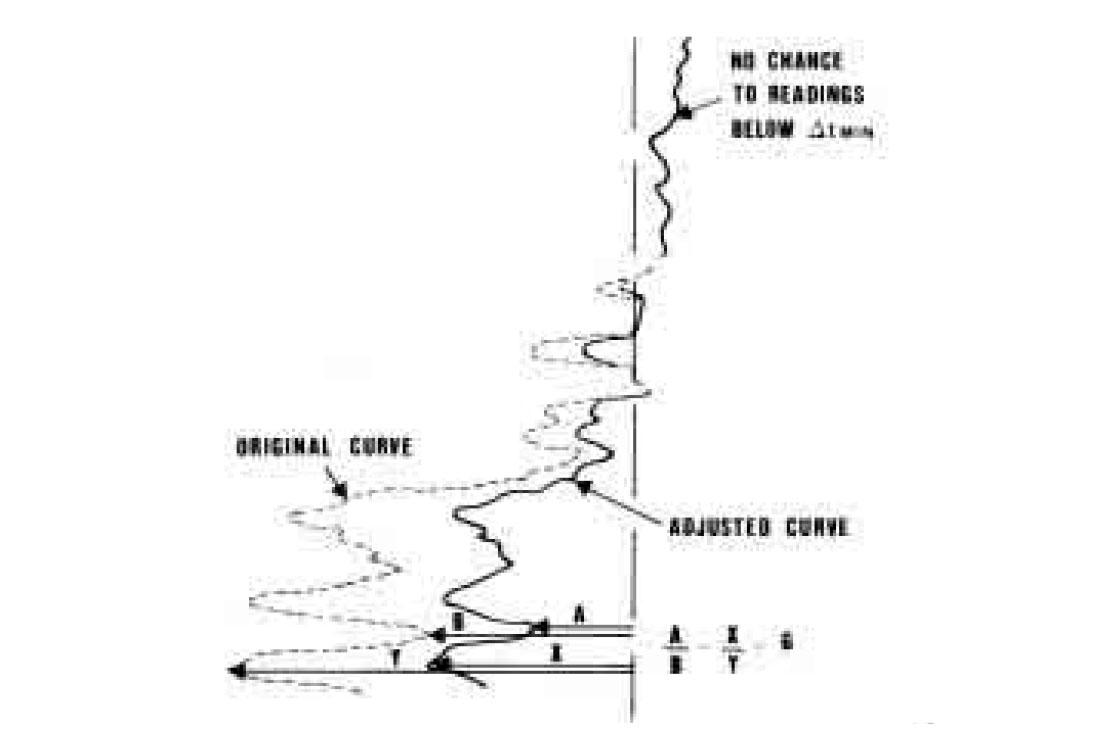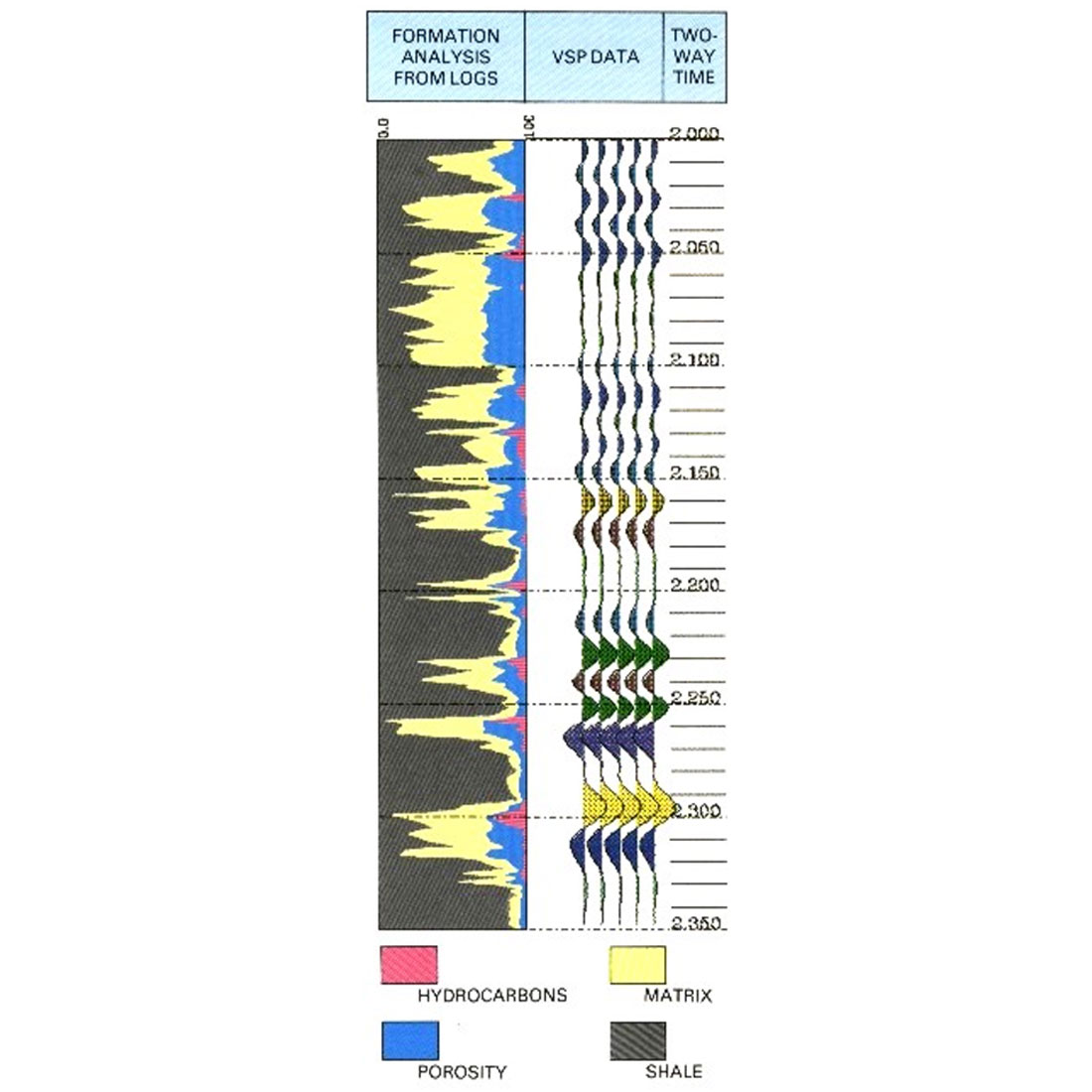New Roles - New Interactions - New Integration
The role of petrophysics in seismic interpretation has taken a major leap forward in the past ten years, resulting from important advances in seismic data processing techniques, particularly seismic inversion, attribute analysis, and amplitude versus offset methods that showed we could estimate reservoir properties from such data. Coupled with the recent advances in dipole shear sonic logging, new vistas in seismic interpretation, dubbed seismic petrophysics, have opened.
Geophysical well logs suffer from many borehole and environmental problems that need to be repaired before being used for calibrating seismic models or seismic interpretations. A primary aim of the geophysicist/petrophysicist is to create a synthetic seismic trace from EDITED log data that accurately represents the seismic response of the subsurface. This is accomplished by editing, repairing, or reconstructing the log data. Using unedited logs for seismic purposes is a waste of time and money and, in the worst case, can lead to very expensive exploration and development mistakes.
If the synthetic seismic trace is a good representation of the real seismic response, then the edited logs can be used effectively as aids to interpretation of the advanced seismic products.
Consequently, the role of the petrophysicists has also evolved; they must now be competent in log reconstruction as well as conventional log analysis, and must understand the petrophysical needs and limitations of the inversion, attribute, or AVO results. Unfortunately, logs are not perfect measures of in-situ rock properties and seismic data is severely band-limited compared to log data, so there are many compromises to be made. A significant change in mindset is also needed, as most of the log repairs (with the exception of fluid replacement) take place in the non-reservoir intervals - intervals that are not usually of interest to petrophysicists.
Geophysicists engaged in seismic interpretation seldom use logs to their full advantage. This sad state is caused, of course, by the fact that most geophysicists are not experts in log analysis. They rely heavily on others to edit the logs and do the analysis for them. But, many petrophysicists and log analysts have no idea what geophysicists need from logs, or even how to obtain the desired results. That’s a particularly vicious “Catch-22”.
Education, practical solutions, appropriate software, and practice are the keys to success. In order for geophysicists and petrophysicists to communicate well, each must know something of the other’s specialty. Chapters Twenty through Twenty- Five on my website www.spec2000.net provide theory, practical methods, and case histories to accomplish this goal.
Seismic Petrophysics and Seismic Modeling
Seismic petrophysics is a term used to describe the conversion of seismic data into meaningful petrophysical or reservoir description information, such as porosity, lithology, or fluid content of the reservoir. Until recently, this work was qualitative in nature, but as seismic acquisition and processing have advanced, the results are becoming more quantitative. Calibrating this work to well log “ground truth” can convert the seismic attributes into useful reservoir exploration and development tools. Since there is an infinite number of possible inversions, it is pretty important to find the one that most closely matched the final edited logs or the computed results from those logs.
A seismic petrophysics study aimed at quantifying porosity is shown below in Figure 1.

This example used a geostatistical package to distribute the dense “fuzzy” seismic attribute data between the sparse, “accurate” well log data. The logs, or log analysis results, in turn are calibrated to core, well test, and production data before being used to control seismic interpretation. The use of geostatistics to map seismic attributes onto well logs is a relatively new phenomenon and is showing great promise.
Seismic Petrophysics and Well Log Modeling
Unfortunately, it takes a fair amount of effort to compare seismic results to log data. The logs will usually require some kind of editing or modeling or both. Comparison of seismic results to log data may indicate that further processing of the seismic is needed, and the calibration cycle is repeated - often several iterations are needed. In other cases, it is the logs that need further editing.
Log modeling or editing is required because logs don’t see the same rock and fluid mixtures that the seismic signal sees. Drilling fluid invasion removes gas or oil near the wellbore, replacing it with water and altering the sonic and density log response from the reservoir’s undisturbed values. Compensating for invasion is called “fluid replacement”. Fluid replacement calculations are also used in “what-if” scenarios to see what a gas filled reservoir might look like on seismic. Such models are usually run post-mortem, after a lovely seismic bright spot was drilled to find an equally lovely porous water zone. Maybe the models should be run BEFORE drilling?
The author and John Boyd presented a practical solution for fluid replacement in 1979, based on the log response equation and a “pseudo-travel time” for typical gases. Since then, at least a dozen, more rigorous but less friendly, solutions have been published: Castagna, Greenberg and Castagna, Zoepritz, Aki and Richards, Batzie and Wang, Toksoz et al among others. Most are based on extensions of early work (late 1950’s) by Biot, Gassmann, and later, Domenico. The final tally is not in yet on fluid replacement calculations for the sonic log, especially in shallow, unconsolidated, or underpressured reservoirs.
Fluid replacement calculations for the density log are straight forward, with no pitfalls if the gas or oil PVT properties are known. How well do you know the reservoir engineer down the hall?
Mechanical or chemical rock alteration due to drilling usually reduces sonic velocity and density in the environment measured by the logging tool. This effect is somewhat subtle but pervasive or it can be catastrophic as in hole breakouts. It can be repaired by using information from other log curves (in the case of bad density data), or checkshot or VSP data to calibrate the sonic log. But many common sense rules for using checkshots are ignored because the software doesn’t think like a human petrophysicist.
Acoustic frequency differences have to be accounted for, especially when shear velocity is measured. High frequency shear velocity (lab measurements and sometimes sonic log data) is faster than low frequency (seismic) data. Anderson’s 1984 paper provides useful information but is weak on specific recommendations.
Poor log response due to bad hole condition or faulty logs may be an even more serious problem, as in Figure 2. Check-shots, offset well data, other logs, and common sense are used to correct for this.

The log should be edited only where it needs it using common sense rules grounded in local and regional trends. Few practitioners have hip pockets full of sonic and density trend data applicable to their current projects.
Again, at least a dozen authors have provided more or less practical solutions, such as Ausburn, Faust, Smith, Fischer and Good, Crain and Boyd, Patchett.
Calibration methods come in three flavours: good, bad, and really ugly. Block shifting a log is really ugly. Rescaling and delta-T minimum methods are better but still a little bit ugly. Discreet editing where the log needs it, or more sophisticated curve fitting techniques based on other logs, are pretty good approaches. The ugly methods are fast and mostly useless, as most of the false reflectivity is still there. The good methods take more effort, but, you get what you pay for.
In other cases, no appropriate logs exist, so sonic and density data have to be created by transforming some other available log. Most of the methods used to repair bad hole effects will also generate complete sonic or density logs. In the worst case, a set of geological tops, lithology descriptions, and an offset well log will suffice, especially if only the density log is missing.
Some models are made by “cut and paste”, for example thickening or thinning a reef or pinching-out a sand bar to see what happens to the seismic signature. Splicing realistic data from one well to another in a geologically sensible manner can create any number of plausible models. The more models you create, the more likely you will find one that matches your seismic.
Some models are made by “cut and paste”, for example thickening or thinning a reef or pinching-out a sand bar to see what happens to the seismic signature. Splicing realistic data from one well to another in a geologically sensible manner can create any number of plausible models. The more models you create, the more likely you will find one that matches your seismic.
Smoothing and filtering may also be performed on raw or edited logs to extract only those frequencies that are likely to be recorded in real seismic data. Cut and paste, and filtering, are fairly obvious operations and are not dealt with further here.
A competent petrophysicist working closely with the geophysicist can provide the needed expertise to solve these problems and generate useful log data. When integrated with the geologist and reservoir engineering members of the team, very credible interpretations will result.
Logs Used to Aid Seismic Petrophysics
The two logs most used by geophysicists are the sonic (also called acoustic) log) and the density log, because these two rock properties determine the acoustic impedance and hence the reflection coefficients of the rock layers. A synthetic seismogram can be calculated from these data.
Raw logs should NEVER be used for this purpose - editing and modeling are nearly always required.
Most other log curves are useful to the geophysicist. For example, the neutron, density, photoelectric effect, and spectral gamma ray (both natural and induced) can be used to determine lithology quite accurately. This knowledge assists seismic modeling and inversion or attribute interpretation.
Even the lowly gamma ray log plotted on a two-way time scale on a seismic section can be an invaluable aid to horizon picking and interpretation, since it is one of the best shale indicators available.
Computed log analysis results, such as shale volume, porosity, lithology, and hydrocarbon fill are very informative when displayed on a seismic section, as shown in Figure 3. Notice the strong reflections caused by even thin gas zones (pink colour on the log analysis).

These properties are all derived from appropriate log analysis techniques. They are generally called log analysis results, petrophysical properties, or computer processed interpretations (CPI). They often provide the “ground truth” for calibrating attribute or inversion interpretation.
Modern sonic logs, called full wave, array, or dipole sonic tools, record the complete sonic waveform instead of just the travel time of the first arrival. This allows us to process each wavetrain to determine shear wave and Stoneley wave travel time (and hence velocity) as well as the more usual compressional wave travel time.
Thus shear wave synthetics can be constructed to calibrate shear wave seismic sections. Lithology analysis and direct hydrocarbon detection are sometimes possible from a comparison of compressional and shear velocities. These can be verified by the compressional and shear synthetic seismograms. A transform of shear and compressional data, either from logs or seismic, into Poisson’s Ratio helps distinguish between hydrocarbon and lithology variations.
The key to interpretation of seismic inversion, attribute analysis, and AVO is Petrophysics. Your friendly, neighbourhood petrophysicist can help you integrate geophysics and petrophysics for more effective exploration and development. Try it, you’ll like it!











Join the Conversation
Interested in starting, or contributing to a conversation about an article or issue of the RECORDER? Join our CSEG LinkedIn Group.
Share This Article